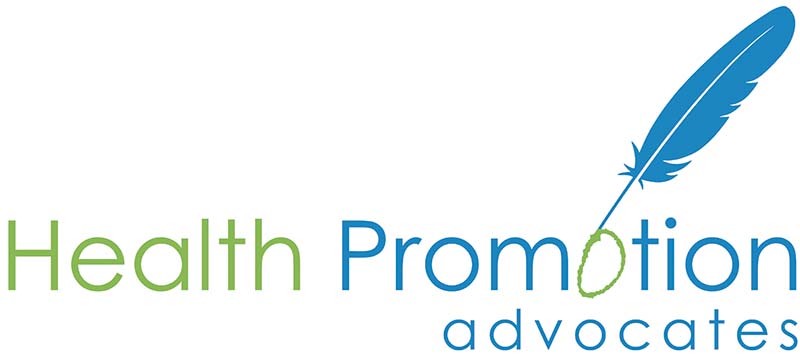Federal Legislation
Working with more than 2,500 grass roots advocates who wrote more than 11,000 letters of support to members of Congress, Health Promotion Advocates conceived one resolution on the importance of integrating health promotion into national policy, and three pieces of legislation and worked with members of Congress to introduce these bills in the United States Senate and House of Representatives in the 108th, 109th, 110th and 111th Congresses until key elements were incorporated into the Patient Protection and Affordable Care Act (PPACA), and became law March 23, 2010. We also advised several members of congress on technical aspects of legislation focused on health enhancement as well as PPACA, including section 2705 “Wellness Incentive” and confirmed support for their inclusion among a majority of members of the Senate and House of Representatives.
Resolution
In 2001, we worked with members of the United States Congress to introduce S.Con.Res.11 – Building Health Promotion and Disease Prevention into the National Agenda Resolution of 2001 in the Senate and House of Representatives. We used this resolution to stimulate discussions on the importance of health promotion and disease prevention and were able to confirm 50 senators as cosponsors.
Health Promotion FIRST
Drawing on interest developed through discussions on the Resolution, we crafted and introduced Health Promotion FIRST (Funding Integrated Research Synthesis and Training) Act in the 108th Congress in 2004 and reintroduced it in the 109th, 110th and 111th Congresses until key provisions from S.1001 (111th) Health Promotion Finding Integrated Research, Synthesis and Training Act (FIRST), were incorporated in the PPACA, which became law March 23, 2010. The most visible element emerging from Health Promotion FIRST was creation of the National Health Promotion and Prevention Strategy, which required each member of the President’s cabinet to articulate how they could use the authority and resources of their department to enhance health. The first report was released in June, 2011.
Healthy Workforce Act
Our work on the Healthy Workforce Act took hold in 2007 when it was incorporated in Senator Tom Harkin’s S.1342 Healthy Lifestyles and Prevention America Act in 2007 in the 110th Congress and then introduced as separate legislation in the Senate S.1753 – Healthy Workforce Act of 2007 and House of Representatives H.R.3717 – Healthy Workforce Act of 2007 in the 110th and 111th Congresses with key elements incorporated into PPACA.
Patient Protection and Affordable Care Act.
The most visible elements emerging from the Healthy Workforce Act, Health Promotion FIRST and our consultations with members of Congress are described below:
National Prevention Strategy, National Prevention Council and Advisory Board
These provisions instructed the members of the President’s Cabinet (i.e., Secretaries of Agriculture, Education, Defense, Health and Human Services, etc.) to write annual reports on how they could leverage their existing authority and resources to improve health, drawing on the perspectives of an advisory board of experts in multiple areas of health. On June 10, 2010, President Obama signed Executive Order 13544 creating the National Prevention, Health Promotion, and Public Health Council. On June 25, 2011, the Council ratified its first status report during a teleconference, and submitted its first Annual Status Report on July 1, 2011; subsequent annual reports were released during the remaining years of President Obama’s two terms in office. A brief history of the rationale and development of the Strategy is provided here.
Wellness Incentives
PPACA amended the Public Health Services Act to clarify how financial incentives could be incorporated into health plan benefits for health plans including self-insured employers. Final regulations for Incentives for Nondiscriminatory Wellness Programs in Group Health Plans Wellness Incentives were released on August 2, 2013 and stimulated integration of financial incentives into health promotion programs offered by the vast majority of self-insured employers. Most of these incentives remain in place despite ongoing court challenges.
Centers for Disease Control and Prevention (CDC) expanded support for Workplace Health Promotion
Additional authority and some funding was conveyed to the Centers for Disease Control and Prevention (CDC) to provide technical support and surveillance for workplace health promotion, through what is now called the CDC Workplace Health Promotion efforts. Some of the core elements are below.
Small Business Wellness Grants
$200 million in grants was authorized to stimulate comprehensive health promotion programs in small business through the National Healthy Worksite Program of the CDC. Only $9 million was distributed. This program has not been renewed by the current administration.
National Workplace Health Promotion Survey
The CDC was instructed to conduct bi-annual nationally representative surveys of workplace health promotion programs to monitor the prevalence and components of programs with the goals of identifying gaps in access and areas of improvement required. To date, one survey with an interactive dashboard has been conducted, the 2017 Workplace Health in America Survey.
Worksite Health Scorecard
The CDC Worksite Health Scorecard was developed in 2008 to help employers assess the scientific validity of their health promotion programs, and was updated in 2013 and 2018.
Workplace Resource Center
The CDC Workplace Resource Center was established to provide access to hundreds of articles, whitepapers and books on best practice strategies for workplace health promotion.
